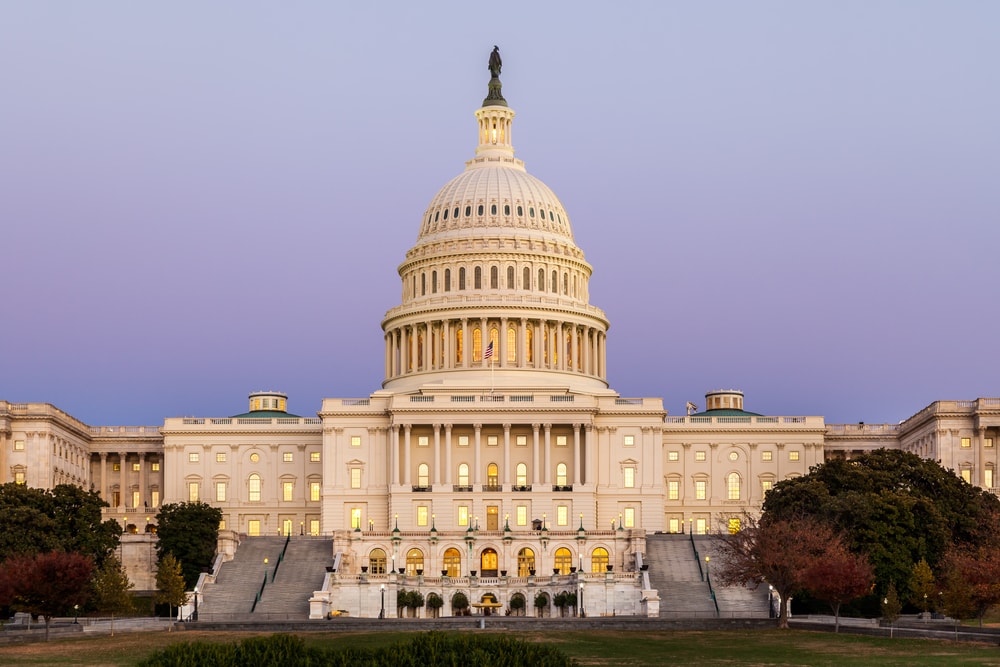It’s Time to Call a Truce in the Red State/Blue State ESG Culture War
Editor’s note: Robert Eccles is Visiting Professor of Management Practice at Oxford University Said Business School and Eli Lehrer is the co-founder and President of the R Street Institute. This post is based on their recent piece. Related research from the Program on Corporate Governance includes The Illusory Promise of Stakeholder Governance (discussed on the Forum here) by Lucian A. Bebchuk and Roberto Tallarita; How Much Do Investors Care about Social Responsibility? (discussed on the Forum here) by Scott Hirst, Kobi Kastiel, and Tamar Kricheli-Katz; Does Enlightened Shareholder Value add Value (discussed on the Forum here) by Lucian Bebchuk, Kobi Kastiel, Roberto Tallarita; and Companies Should Maximize Shareholder Welfare Not Market Value (discussed on the Forum here) by Oliver Hart and Luigi Zingales.
Over the past year, the debate over Environmental, Social and Governance (ESG) standards in the United States has revealed stark policy contrasts between red and blue states. Red state officials have proposed and enacted “anti-boycott” bills which bar state business with firms that divest from favored industries. Blue states, on the other hand, have widely considered efforts to mandate divestments from the same industries. Neither approach makes economic sense. Recognizing this creates a real opportunity for a truce, based on fiduciary duty and the separation of political issues from investment decisions.
And we need a truce because the pace of legislation about ESG is only accelerating. Data collected by the law firm Simpson Thacher & Bartlett shows that at least 28 policies and laws have taken effect since 2021 alone and, as of the spring of 2023, there are at least 13 pending bills related to ESG. This doesn’t count the enormous number of existing policies–everything from preferences for small businesses to laws against investing state funds with companies that operate in certain countries–that would fall under the ESG umbrella if proposed today. While the stated financial protection and future-proofing objectives behind these proposals are worth consideration, they are bad policies likely to fail on their own terms while doing significant fiscal damage.
Let’s start with the red-state boycott ban bills which are typically directed at investment firms that limit firearms or fossil fuel investments. These bans represent an unwise ceding of legislative power that will cost states billions. Texas existing law’s language–typical of similar bills introduced across the country–defines a boycott as any effort to “penalize, inflict economic harm on or limit commercial relations with a company” involved in the fossil fuel industry without “ordinary business purpose.” The law, furthermore, allows the state comptroller’s mere “judgment” to be sufficient for making a determination that a firm has started a “boycott.” If such a determination is made, the state could discontinue business with a firm even if it has the best price, quality or performance record. Studies from the University of Pennsylvania estimate that this political move could cost the state over $400 million a year and $6 billion in the next decade.
But this may be an underestimate, in part because the law cedes so much power to the comptroller. Since mere portfolio rebalancing, something a major financial firm will do somewhere every day, can “limit” commercial relationships, a comptroller who wished to could likely disqualify almost any entity. Standards elsewhere ranging from an anti-ESG order issued by Florida’s chief financial officer to near identical Kentucky and Oklahoma laws that similarly restrict ESG investments will likely have similarly deleterious fiscal effects. In other words, efforts to “protect” state funds from ESG are likely to have very high costs for the states and represent an enormous grant of power by the legislatures
While anti-boycott bills are too new for anyone to have long-term evidence of their impacts, there is little question that their mirror image–mandatory divestment policies–have negative fiscal consequences and fail to produce their desired outcomes. As such, a Maine law that requires the state pension funds to end fossil fuel investments–typical of proposals floating around in several blue states–seems almost certain to have roughly the same impact as past divestment policies targeting narrower classes of firms. Analysis conducted by California’s giant CalPERS and CalSTRS pension funds both show billions in dollars of losses resulting from that states’ existing divestment policies. Even worse for supporters of divestment efforts, the best evidence seems to indicate that they are actually counterproductive. A working paper authored by Vaska Atta-Darkua and three others indicates that divestment efforts do nothing to encourage the green innovation but simply reallocate capital towards firms that already have significant “green” revenues. Writing in Harvard Business Review, likewise, Tom Johansmeyer points out that divesting from any publicly-traded asset can actually attract new capital to that asset and actually improve its prospects.
The example of cigarette companies shows how this works: widespread divestment did temporarily drive down their stock prices beyond what their fundamentals would justify. But this made them more attractive and, as such, they outperformed other investments; Philip Morris International now has a higher market capitalization than household name companies ranging from Morgan Stanley to Bristol Myers Squibb. Even if stock prices remain depressed, a highly profitable company can still make itself an attractive investment simply by raising dividends. And the same dynamics that have made divestment a failure seem likely to apply to boycott bans over the long term even if they become widespread enough to impact stock prices.
But even though most pro- and anti-state level ESG policies don’t work as advertised, it’s unwise to dismiss the rationale behind them out of hand. State employees–who, ideally, will represent the full spectrum of a state’s views–shouldn’t have their pension funds invested in ways that place what may be political views above return on investments. State governments, particularly those with economies that rely on disfavored industries, have a legitimate interest in making sure that their money isn’t invested with firms that harbor an irrational bias towards those same industries.
On the other hand, any number of ESG-related considerations can have strong connections to investment return. The coal industry’s footprint has shrunk for decades and dozens of coal companies have gone bankrupt in recent years as coal has been replaced by natural gas, wind and solar. Firms in any industry can gain huge advantages if they can recruit talented workers from groups that others might discriminate against or ignore. Recruiting Millennial and Gen Z workers is especially challenging and diversity is a high priority for many of them. Even overtly political considerations that might be disagreeable to some can have strong financial justifications. For example, a pro-gun investment manager who believed that legal changes on the federal level might make gun manufacturers liable for intentional shootings were both inevitable and highly likely depress stock prices would have a duty to dump shares.
This brings us to a proposed solution that both the left and right should be able to agree upon: clear fiduciary duty laws that define who is responsible for state investment, allow them to consider ESG factors only when they contribute to economic value creation and assure that state employees in defined contribution plans can select non-ESG options.
The clear depiction of fiduciary responsibility should come first. While systems differ between states, and even between various pension systems in the same state, laws should clearly define an individual or specific group as a fiduciary and, if existing state laws don’t already echo or exceed them, use the Taft-Hartley Act’s provisions on union sponsored health and pension plans as a model to outline their duties. Even where standards exist somewhere in statute, legislatures would do no harm by clarifying exact responsibilities: most plans have developed over time and, given the difficulty of reforming pensions in general, many state statutes remain unclear.
More importantly, states should adopt clear limits on making ESG investments in the first place. Laws passed in decidedly red North Dakota and Idaho offer good models in this regard. North Dakota’s law defines “social investment” as “consideration of socially responsible criteria…for the purpose of obtaining an effect other than a maximized return” and requires the State Investment Board to “demonstrate a social investment would provide an equivalent or superior rate of return compared to a similar investment that is not a social investment and has a similar time horizon and risk” before making it. The Idaho law contains language with similar effect and allows that state-defined contribution plans offer employees socially-oriented investment funds only so long as they offer alternatives as well. Both policies are worthy of emulation.
While nothing besides a hard-to-pass state constitutional amendment can bind future legislatures, states seeking sensible ESG policy overall should try their best to insulate pension funds, other investments, and public contracts and investments from political concerns. This will differ from state-to-state but, at minimum, it’s a good reason for states to avoid “cause of the day” divestment/investment legislation on issues like Russia’s invasion of Ukraine, attacks on the State of Israel, and global human trafficking efforts. If states feel they must take symbolic action on issues like these–most of which are really federal business anyway–they have a wide range of other tools at their disposal. Legislatures can create grant programs, sponsor research, designate or change place names and more. All of these things can have significantly more symbolic impact than investment policies.
Standards and norms like these would assure that state officials couldn’t use a contracting or investment process to make political points. Instead, they would exercise business judgment regarding ESG factors–as a fiduciary. Under such rules, for example, state investment managers could not prefer one consumer products company over another solely because it bought more alternative energy. On the other hand, the standard would let investment managers reduce fossil fuel holdings because their analysis predicted decreased demand for fossil fuels. This truce on state level ESG laws involves some give and take from both sides. It points a way towards a fiscally sound future that holds investment managers accountable while allowing them to make the best possible judgements.



